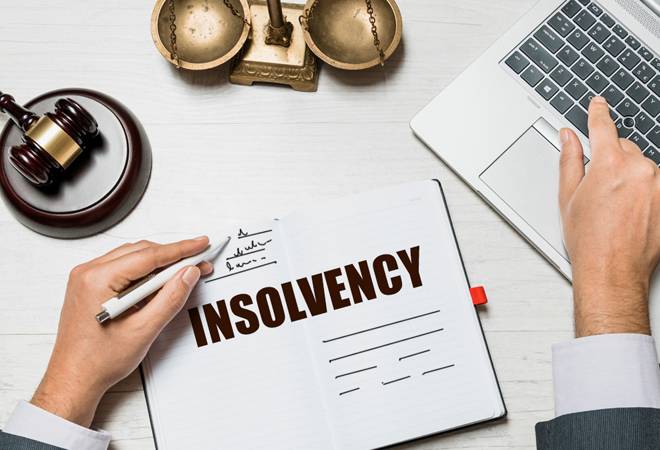The Only Guide to Insolvency Practitioner
The Only Guide to Insolvency Practitioner
Blog Article
The Buzz on Insolvency Practitioner
Table of ContentsGet This Report about Insolvency PractitionerInsolvency Practitioner Things To Know Before You BuyA Biased View of Insolvency PractitionerThe Single Strategy To Use For Insolvency PractitionerThe Main Principles Of Insolvency Practitioner The Facts About Insolvency Practitioner RevealedThe 8-Minute Rule for Insolvency Practitioner
Insurance coverage is monitored and managed by state insurance departments, and one of their main purposes is protecting insurance holders from the risk of a company in monetary distress. When a business goes into a duration of economic difficulty and is incapable to satisfy its commitments, the insurance policy commissioner in the business's home state starts a processdictated by the regulations of the statewhereby efforts are made to assist the business regain its economic footing.If it is established that the company can not be rehabilitated, the firm is proclaimed insolvent, and the commissioner will ask the state court to buy the liquidation of the firm. The insurance policy commissioner, either designated by the governor or chosen, heads the state insurance coverage division and screens and controls insurance policy activity within the state.

[Back] By obtaining control of a firm, the commissioner (or the insurance division) is, by regulation, the rehabilitator or liquidator of the company. In this ability, the commissioner or division takes control of the business's operations. Instead of do so directly, the commissioner may maintain a special replacement receiver to monitor the company's activities.
Insolvency Practitioner Fundamentals Explained
The receiver oversees an accountancy of the company's possessions and liabilities and provides the estate of the firm. In doing so, the receiver seeks to take full advantage of the company's properties, move them to money, and afterwards disperse that cash to financial institutions having legitimate claims against the insurer according to settlement priorities specified by state legislation (in all states, insurance policy holders are concern claimants whose cases are paid prior to those of basic financial institutions).
All insurer (with minimal exemptions) licensed to offer life or medical insurance or annuities in a state should be members of that state's warranty association. The warranty organization complies with the commissioner and the receiver in pre-liquidation planning. When the liquidation is gotten, the guaranty organization supplies coverage to the company's insurance holders who are state citizens (approximately the levels specified by state lawssee listed below; any kind of benefit amounts over the warranty asociation benefit levels become claims against the firm's remaining possessions).
The above protection degrees use separately for each bankrupt insurance provider. [Back] When an insurer stops working and there is a shortage of funds needed to satisfy the responsibilities to insurance holders, state guaranty organizations are turned on. Guaranty organizations have two main sources of funding when providing insurance coverage to insurance holders. Initially, guaranty organizations have subrogation legal rights to a proportionate share of the possessions remaining in the stopped working insurance provider.
The Best Guide To Insolvency Practitioner
Second, insurers doing service in that state are examined a share of the amount called for to fulfill the part of the warranty associations' covered claims not otherwise funded with estate possessions. The quantity insurance firms are evaluated is based on the quantity of costs that they accumulate in that state. The National Company of Life and Health And Wellness Insurance Policy Warranty Associations (NOLHGA) is made up of the life and health and wellness insurance warranty organizations of all 50 states and the District of Columbia.
NOLHGA establishes a task pressure of depictive warranty associations to work with the insurance commissioner to create a strategy to safeguard policyholders. For even more information on NOLHGA's function while doing so, see "What Is NOLHGA?" and "The Security Web at the workplace." [Back]
You are below: Insolvency is when a company or individual can't pay debts when they are due. There are a number of choices available to an insolvent company or individual: ASIC regulates firms, it does not manage individual insolvency treatments. For more details about personal bankruptcy and personal bankruptcy arrangements, visit the Australian Financial Security Authority web site.
Getting The Insolvency Practitioner To Work
Predictive protection by aiding you choose the best clients and the right markets to stay clear of uncollectable loan to begin with, thanks to severe monetary evaluation (Insolvency Practitioner). In-depth market intelligence, giving you with 360-degree exposure on organization fields and putting in jeopardy difficulties. It would be a simplification to believe a profession credit score insurance policy begins and ends with premiums and pay-outs
This can occur for a variety of reasons, including poor economic administration, unanticipated prices, or a change on the market. If a business is financially troubled, it might be required to fold or liquidate possessions to pay creditors. This can have a significant influence on business, staff members, and investors.
Excitement About Insolvency Practitioner
It can result in task losses, property sales, and even bankruptcy. It is necessary to understand just how business insolvency works and exactly how it can impact your my site organization. Why does a company get in into insolvency? There are a variety of reasons that a company might enter into insolvency. One of the most typical reason is that the business is unable to pay its debts as they drop due.

Insolvency Practitioner Fundamentals Explained
The company may be required to market possessions, lay off staff or even shut down. Financial institutions might be left out of pocket and the company's investors may see their financial investment disappear.
This can take place for a number of reasons, including poor monetary administration, unforeseen expenses, or an adjustment in the market. If a company is bankrupt, it might be required to shut down or liquidate assets to pay creditors. This can have a significant influence on business, employees, and investors.
The Insolvency Practitioner Diaries
Why does a firm get in right into bankruptcy? There are a number of reasons why a business might get in right into bankruptcy.
Various other reasons for insolvency include scams, mismanagement, and unexpected prices. Insolvency can here also lead to task losses and the closure of organizations.
This can have severe implications for the firm, its stakeholders, lenders and the economic situation. The firm may be compelled to sell assets, lay off team or perhaps close down. This can have a knock-on impact on the local neighborhood and the economy in its entirety. Creditors may be excluded of pocket right here and the business's investors may see their financial investment go away.
Report this page